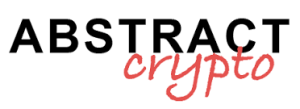The European Union (EU) has introduced an exemption that represents a great relief for Bitcoin miners and Proof-of-Stake (PoS) validators.
With this move, the European financial regulator has decided not to subject them to the reporting obligations on market abuse, a regulation that could have pushed them to operate elsewhere.
EU: the decision of ESMA and its impact on Bitcoin miners and validators
The decision was made by the European Securities and Markets Authority (ESMA).
Which last December established that miners, validators, builders, and researchers do not fall into the category of “Persons Professionally Arranging or Executing Transactions” (PPAETs).
According to the rules established by the Markets in Crypto-Assets Regulation (MiCA), PPAETs are required to monitor and report any market abuses.
With this new regulatory clarification, these obligations will now primarily fall on the providers of services for digital assets (CASPs), such as the cryptocurrency exchanges.
According to Patrick Hansen, director of EU strategy and policy at Circle, this decision demonstrates a flexible regulatory approach, capable of balancing compliance needs with the promotion of innovation in the crypto sector.
Patrick Hansen has declared the following in this regard:
“ESMA has chosen not to rigidly define the PPAETs in the regulatory technical standards (RTS), leaving room for maneuver to adapt to market evolution.”
If the miners and validators had been included in the PPAETs, the regulatory burden on them would have increased significantly.
This could have led them to transfer their operations outside the EU, reducing the growth opportunities of the crypto industry in the region.
The exemption will favor financial innovation in Europe
The choice of ESMA could stimulate innovation in the European financial sector, preventing miners and validators from being incentivized to operate in less restrictive jurisdictions.
Hansen highlighted how a stricter decision could have pushed these operators to leave Europe or to avoid establishing themselves there, hindering the development of the digital market on the continent:
“It is positive to see that the regulator has considered the potentially negative impact on the industry and the EU, avoiding pushing innovation towards other areas.”
The Markets in Crypto-Assets Regulation (MiCA) is considered the most advanced regulatory framework for the cryptocurrency sector. The regulation came into effect in June 2023, with a particular emphasis on the management of stablecoins starting from mid-2024.
One of the most visible effects of MiCA has been the removal of several non-compliant tokens from exchanges operating in the EU.
For example, platforms like Binance have delisted Tether’s USDT stablecoin, while Circle’s USDC has benefited from a significant regulatory advantage.
The impact of MiCA on the stablecoin market
The implementation of MiCA has had direct implications on the market of stablecoin, with a clear impact on the market capitalizations of the two main cryptocurrencies pegged to the dollar.
According to TradingView data, the capitalization of USDC has increased by nearly 80% since MiCA came into effect, reaching a value of 57 billion dollars, a level higher than the peak of the 2021 cycle.
In the meantime, Tether (USDT) has reached a new high of 142 billion dollars, but its growth rate has been more modest, with an increase of 28% in the same period.
This trend suggests that USDC has gained a significant advantage thanks to the implementation of the new European regulations.
The recent decision by the ESMA to exempt miners and validators from reporting obligations is part of a broader effort by the EU to create a regulatory framework that encourages innovation without stifling the sector.
At the same time, with the MiCA regulation limiting the use of certain stablecoins, the EU continues to shape the crypto market with stringent but targeted rules.
The long-term effects of these policies remain to be seen, but the direction taken suggests a greater openness to new financial technologies.


